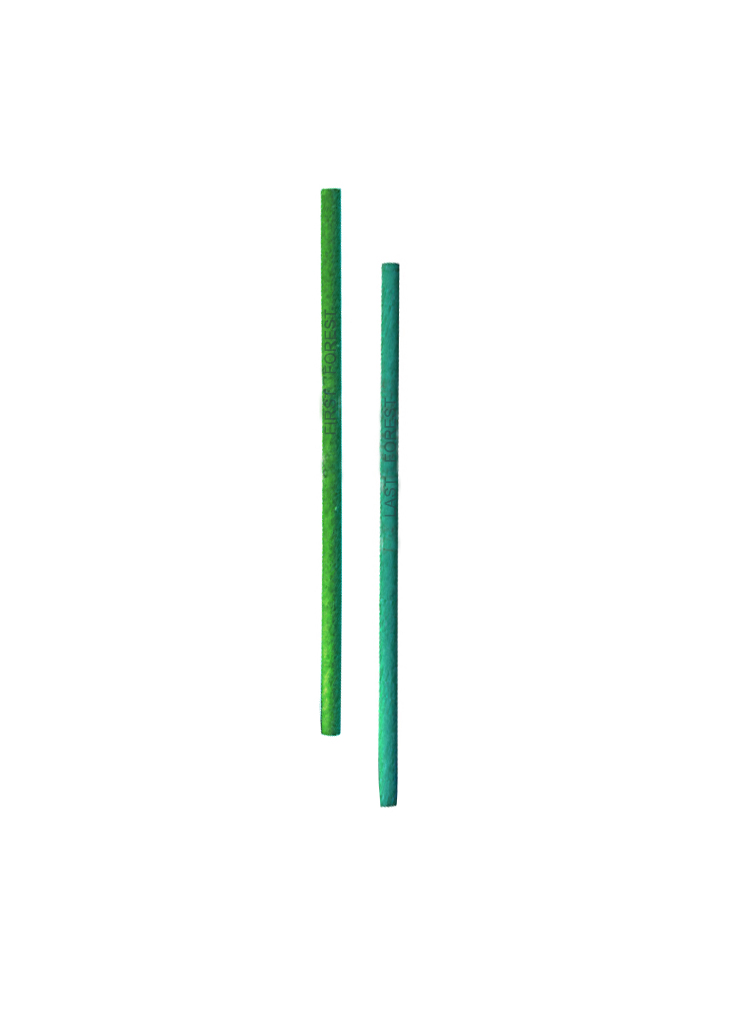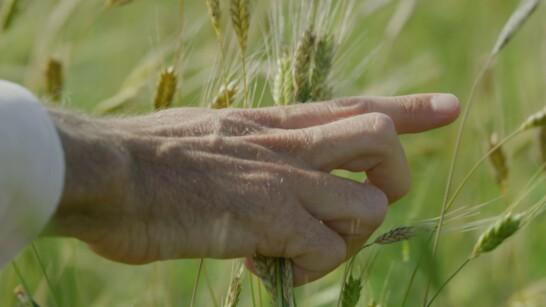News
Defining forests – On the scientific background to Katie Paterson’s artwork

The Scottish artist Katie Paterson’s IHME Helsinki Commission 2021, To Burn, Forest, Fire, will consist of the scents of the first forest on our planet and the last forest of the age of climate crisis. These scents will be turned into incense and burned in various parts of the city in autumn 2021.
This introduction might prompt the question: What was the first forest on the planet, let alone what might its scent have been? There may be a clue to what the last forest of the age of climate crisis will be, since we are talking about events of our own time.
Katie Paterson Studio conducts long-term background work with researchers who have job descriptions relevant to each work of art. The ideas for works spring from the artist’s imagination, but the ability to transform those ideas into real, finished works is guaranteed by scientific research. In the end, we have to remember that sometimes, even at their best, the answers to our questions are “best estimates”.
What is a forest?
To determine what was the first forest on our planet and what will be the last forest in the age of climate crisis, Paterson has had discussions with scientists. Professor Emeritus Jan Zalasiewicz (University of Leicester School of Geography, Geology and Environment), Docent of Palaeoclimatology J. Sakari Salonen (University of Helsinki), Palaeobotanist Chris Berry (University of Cardiff, Wales), and Professor of Literature, Biology and Environmental Research David George Haskell (Sewanee: The University of The South, Tennessee, USA) and researcher Ana Maria Yáñez Serrano (Centre for Ecological Research and Forestry Applications (CREAF), Barcelona) have been involved from the beginning.
The first question was: What is a forest? Even though the word “forest” is used quite generally, it does not always have the same precise, universally recognized definition; there are more than 800 different definitions of “forest” around the world. The definition of a forest usually includes the presence of trees, but many definitions refer to an area where trees once grew, where trees will grow at some time, or which is defined by law as a forest, regardless of its vegetation.[1]
Most commonly, a forest is defined as an ecosystem dominated by trees. The US National Vegetation Classification system defines a forest as an area where trees with canopies that overlap each other cover 60-100% of that area.[2]
The definition of a forest that Katie likes the most was given by Jan Zalasiewicz: “Enough trees to get lost in.”
The first forest
Three fossil-forest candidates were found as potentially being the first forest on our planet[3], all dating back to the Devonian period of geological time: the forest that grew 385 million years ago in Cairo, New York State; the forest that grew 380 million years ago in Gilboa, also in the New York State; and the 365-million-year-old forest in Anhui Province, China.
Chris Berry is a palaeobotanist who specializes in the first forests of the Devonian period. He favours Cairo as the first forest and makes a strong case for this. One of the trees found there, Eospermatopteris (Cladoxylopsida), is generally agreed by scientists to be the “first tree”. Another argument is that the emergence of trees and forests at this point in the Mid-Devonian (393–383 Ma) was a turning point in Earth’s history, as it marked a permanent change in its ecology, geochemical cycles, atmospheric carbon-dioxide concentrations, and climate. This, in turn, is significantly linked to the extinction wave and climate crisis of our time, to which Katie Paterson wants to connect her work.
The last forest of the age of climate crisis
At our October press conference, Katie Paterson said that she and the scientists had ended up with two options for the last forest in the age of climate crisis: the Amazon rainforest; and the northern taiga forest. Both types of forest are under threat as a result of human activities and global warming.
The Amazon’s forests and diversity are threatened by intensive plant and animal farming, power stations, and dams, and taiga forests by the melting of permafrost. The disappearance of both will also accelerate the climate crisis: loss of rainforests will eliminate a significant carbon sink; and the melting of permafrost will release significant amounts of greenhouse gas, methane, from the soil. In Katie Paterson’s project, the Amazon rainforest was chosen as the last forest of our time.
Amazon under threat
The Amazon is the obvious choice. It is a forest whose destruction is widely understood by humans.[4] Located in South America, the Amazon is the largest forest and estuary on Earth. It covers half of the area of Brazil and extends into neighbouring Bolivia, Peru, Colombia, Venezuela and Ecuador.
The Amazon is also facing the worst deforestation in the world, and action is urgently needed to prevent a large-scale, irreversible ecological catastrophe. The WWF estimates that 27 percent of the Amazon biome will be without trees by 2030, if the current rate of deforestation continues. The choice of the Amazon is also justified by the fact that the rate of extinction of plant and animal species is predicted to be two or even four times greater in the tropics than in temperate climates. This is a major problem because most plant and animal species occur in the tropics.
Last forest of the future
If we look to the future, to the planet’s last forest, it will probably be one that does not yet exist, and which will most likely be located in the northern regions, since the climate in the southern hemisphere will become too hot for plants. The northern regions are also warming significantly, and so any forest that will be able to survive in the northern climate will be a tropical one, like the Amazon, but replacing the existing boreal forests. Thus, the Amazon is not only the most threatened forest now, but will also be the last type of forest on our planet.
Read more about Katie Paterson’s IHME Helsinki commission 2021: To Burn, Forest, Fire >>
Watch the documentation of the conversation between artist Katie Paterson, Professor Emeritus Jan Zalasiewicz and Docent of Palaeoclimatology J. Sakari Salonen on IHME’s YouTube channel >>
_____
[1] Elisabeth Grinspoon, ‘Facts on Forestry’, 2007
[2] Elisabeth Grinspoon, ‘Facts on Forestry’, 2007
[3] “Mid-Devonian Archaeopteris Roots Signal Revolutionary Change in Earliest Fossil Forests”, 2019 https://www.cell.com/current-biology/fulltext/S0960-9822(19)31569-6#secsectitle00
[4] Jessica Corbet, ‘Climate Crisis Could Cause a Third of Plant and Animal Species to Disappear Within 50 Years: Study’, 2020 https://www.ecowatch.com/climate-crisis-plant-and-animal-species-2645160419.html?rebelltitem=3#rebelltitem3


